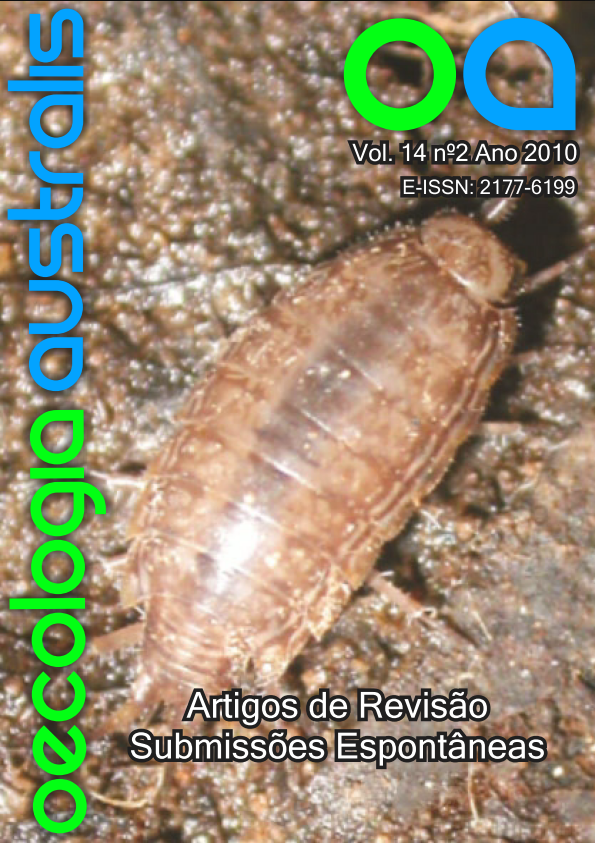ECOMORPHOLOGY OF PREDATION AND ANTIPREDATION IN SILURIFORMES (OSTEICHTHYES)
Keywords:
Antipredation, ecomorphology, predation, revision of the literature, siluriformes.Abstract
Ecomorphology is the branch of the ecology that searches for the relations between the morphologic and ecological aspects. In this context, the implications of the functional morphology of predation and antipredation external structures can indicate the existence of possible patterns of the biological roles in the phenotype-environment relationship. The objective of this paper was to revise the form and effect relationships, through the existent literature, in two fundamental aspects in the morphologic approach through predation and antipredation processes in Siluriformes. The basic morphologic structures studied were head, trunk and fins, and they can present different biological roles, through different morfo-functional mechanisms, involved in defensive and predatory mechanisms. The two differentiation levels are strongly bonded, to both preys and predators, in a intrinsicable ambiguous way. The structures of predation as those of antipredation can present the same function and different biological roles, in an evolutionary process, characterized by different patterns adaptations in structures as mouth, eyes, barbels, sensorial organs, dermal plates and spines in Siluriformes.


